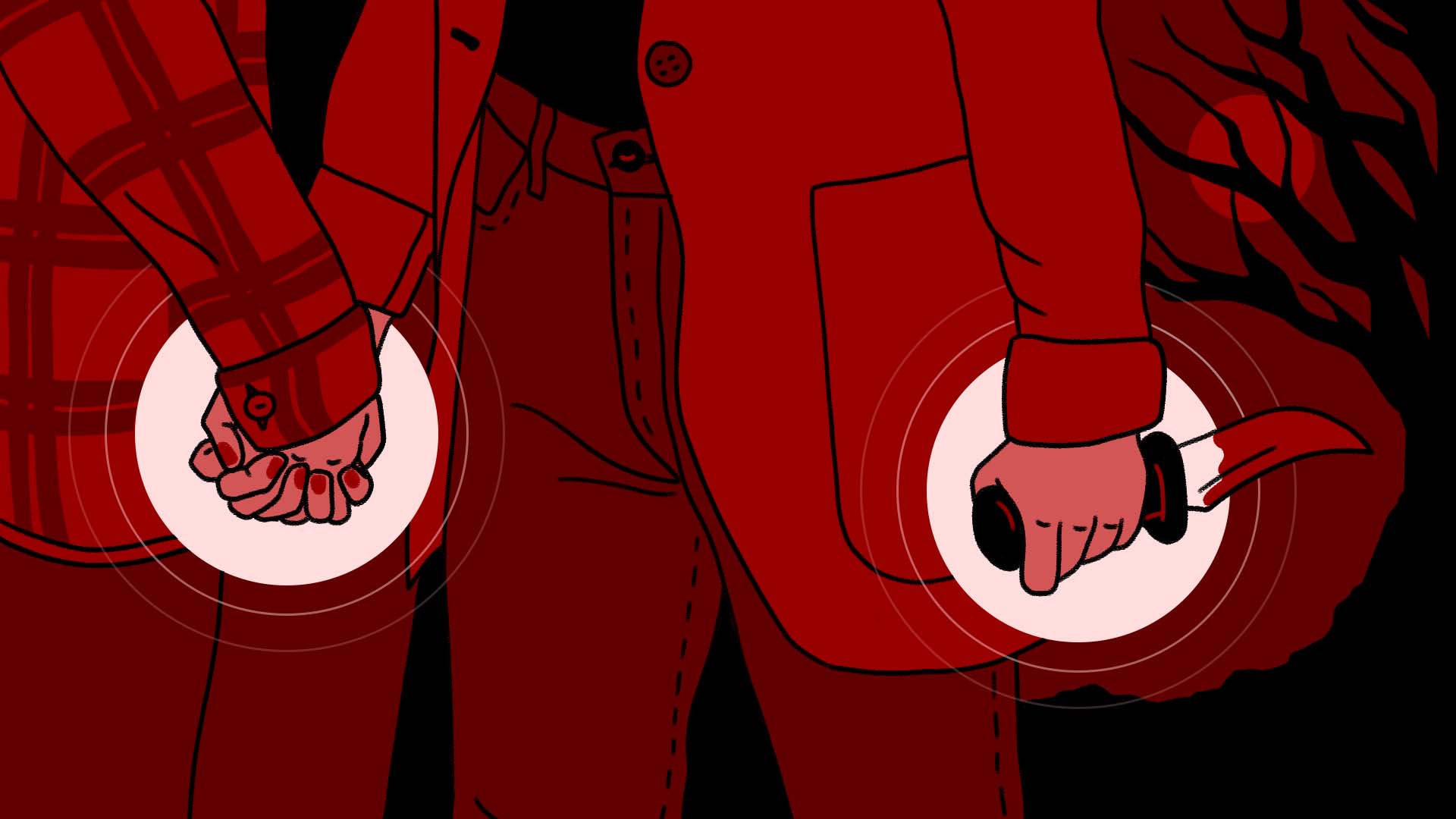
First, safety. SAIC’s Anti-Racism Committee holds conversation in response to continued violence against AAPI community
Last week a staff member at F was leaving the Lakeview building around 7 p.m. when a young man stepped in front of her and tried to yank her bag from her arms. He grabbed it at an awkward angle, according to the staff member, and after realizing she wasn’t just going to let go easily, gave up.
A few factors make this situation feel a bit ridiculous: One, she was walking with other people; two, it was 7 p.m. on high-traffic Michigan Avenue; three, the thief went after a small, frilly sack containing her knitting supplies. That’s not to downplay the incident, it’s to remind everyone that some crimes are based purely on opportunity and adrenaline rather than perceived gain.
Sadly, some crimes do have clear motivations. In response to concerns about the way safety and identity interplay, the Asian, Asian American, and Pacific Islander (AAAPI) Access and Visibility Working Group, a part of the Anti-Racism Committee (ARC) at SAIC, is hosting a community conversation this upcoming Tuesday, Dec. 14.
The agenda will cover best practices for navigating the city and the school and a discussion about how communal safety complements a range of anti-racist actions. More information about the speakers and the agenda can be found here. In any case, keep your knitting supplies close, and look out for one another.
CTA wants you to get home eventually, I mean, safely. Proposed extension to Red Line receives boost
Recently the Chicago Genius Herald’s comedy website ran a farcical article titled, “Left Unchecked, Red Line Expansions Could Spread All Over City By Mid-2040s, Providing Dangerous Levels Of Interconnectedness And Convenience.” Thanks to Biden’s $1 trillion infrastructure bill, that threat is imminent. Well, almost imminent.
The CTA’s Red Line Extension Plan is part of a larger red line revamp called “Red Ahead,” which all-too-often finds itself at the signal, waiting for clearance. However, with the injection of $17 billion into Chicago’s infrastructure projects thanks to the bill, media outlets and city officials are cautiously hopeful that the proposed six-mile long southern stretch of red line might actually come to fruition.
The extension would push the train’s current southern terminus at 95th/Dan Ryan further south, to 130th Street. Four stations would be added at 103rd Street, 111th Street, South Michigan, and 130th Street. The overall project would cost an estimated $2.3 billion, a worthwhile expenditure to make good on an issue that residents have been pushing for since the Nixon era, according to Streetsblog Chicago.
CTA officials have even estimated that they could begin construction on the project as soon as 2025, and have it running by 2029. So, uh…brace yourselves?
But what do you really think of when you hear “red line?” Large scale study of the US rental market reveals racism
Last month the National Bureau of Economic Research conducted a large-scale study of discriminatory practices in the US rental market. In the study, researchers created fictitious names that sounded White, African American, or Hispanic/Latinx. The researchers then contacted over 8,000 property managers in the 50 largest cities — resulting in a total data set of 25,000 interactions — and recorded the managers’ response rates.
According to the data, White-sounding names received a 60% response rate, while African American and Hispanic names received 54% and 57% response rates, respectively.
Lower response rates lead to higher levels of residential segregation and larger gaps in intergenerational wealth. The study broke down response rates by individual city and found that Black renters were most likely to face racial discrimination in the rental market in…wait for it…Chicago.
If the rental housing market reflects the buyer’s market at all, then this outcome is unsurprising. Over the past few years, Chicago has been the subject of economic reports and investigative journalism that repeatedly reveal discriminatory practices in housing. The most recent, a report by WBEZ, shows that property records are peppered with antiquated and racist language.
Twentieth-century housing contracts are flush with explicit racism. Terms and conditions in deeds included phrases like: “Premises shall not be sold, leased or conveyed to persons of African blood.” These days, explicit commands are unenforceable, thanks to a 1968 Supreme Court ruling. Here’s a pause to think about how recent that is. Yet the language remains. It wasn’t until this past summer that Governor JB Pritzker signed a bill allowing homeowners to remove racist language from their property deeds. The law takes effect in January.
One of the curious things about the racist language, WBEZ found, is that the deeds were written before the era of white flight and the highways that enabled urban/suburban segregation. Attached to houses outside the places Black Southerners moved to, the language existed less as a realistic restriction and more as a comforting sub-text to white buyers.
Is there a -phobia word for “fear of something that’s not a threat?” Gender-neutral pronoun “iel” causes uproar in France
A major French dictionary, Le Petit Robert, added the gender-neutral pronoun “iel” (pronounced “yell”) to its online edition last month. It is a clever combination of the masculine “il” (he) and feminine “elle” (she). In recent weeks, prominent political figures have expressed their strong opposition to the word. Minister of Education Jean-Michel Blanquer tweeted that “inclusive writing is not the future of the French language,” and First Lady Brigitte Macron declared: “There are two pronouns: he and she. Our language is beautiful. And two pronouns are appropriate.”
The backlash is rooted in both philosophy and fear. France is built on the idea of universalism — in many ways the polar opposite of the American ideology, “e pluribus unum” (“out of many, one”). While American unity is, at least theoretically, based on the idea of many identities coming together as one, the French hold that the unified identity transcends the individual.
If it feels hard to parse the universalism from the nationalism, that’s because it is. That said, America’s “melting pot” hasn’t proven to be particularly successful either. As both countries argue fervently for their own vision of unity, we have to wonder, who do they want to see in that unified image, anyway?
While the philosophical debate is centuries old, the fear generating France’s crass political reactions is distinctly contemporary. It is the fear of “American woke-ness.” François Jolivet, a center-right lawmaker, wrote to the Académie française demanding that they consider the new pronoun a threat. The addition of “iel,” Jolivet wrote, “will no doubt be the precursor of the advent of woke ideology that is destructive of our values.”
In an interview, Jolivet argued, “you legitimize words, you legitimize thoughts.” Which seems, at least to me, precisely the point.
You know what doesn’t seem legit? U.S. Democracy. At least not to Vladimir Putin.
On Dec. 3 the Washington Post published a government military document indicating a potential Russian invasion of Ukraine. Putin has a history of fixating on Ukraine, dating back to the breakup of the Soviet Union in 1991. In 2014, during a political revolution in Ukraine that ousted a pro-Russia leader, Putin installed troops in the Crimean peninsula, initiating a war that continues today.
The invasion largely failed, yet it took thousands of lives. It also showed the world that Putin was willing to deploy Russia’s military to gain influence over Ukraine. But then the world largely stopped watching.
The West may have shifted its focus away from Putin and Ukraine, but Putin never took his eyes off the West. With the frenzied withdrawal of American troops from Afghanistan, a politically divided population, a president who can’t seem to get anyone’s approval, and a shaky (at best) stance on democracy fomented since 2016, Moscow might be looking at the U.S. and seeing an opportunity.
That’s to say nothing of the fact that Putin has been repeatedly empowered by interventions in Syria and Belarus using what Annie Applebaum, a reporter for the Atlantic, calls Putin’s “rescue package” for foreign dictators — that is, a strong military presence, heavy-handed intimidation tactics, and Russian markets to protect their economies from Western sanctions. Other journalists have taken to calling this the “dictator’s learning curve.”
Perhaps learning from the inflammatory tone of the Trump era and not wanting to create a self-fulfilling prophecy, the media seems to be decidedly cool-headed about Russia’s military drills. On Dec. 4, immediately after the Washington Post published the military document, the New York Times ran a sub-headline that read: “An invasion force could include 175,000 troops, but U.S. officials stress that President Vladimir V. Putin’s intentions remain unclear.
On Dec. 7, President Biden met with Putin over video conference to discuss Ukraine’s border. One of the “five key takeaways,” from the meeting, as the New York Times reports, is that “there is little evidence of any personal hostility between Mr. Biden and Mr. Putin.” There also seemed to be “little hostility” between Trump and Putin, but that doesn’t alleviate concern in any way.
I would never claim to know what’s going on inside of Putin’s head. But given his fixation on Ukraine; a recent, failed attempt at annexation; 175,000 troops at its borders; and a fading US presence, what feels the most unclear to me is: Do his intentions really remain unclear?
Parker Yamasaki (MANAJ 2023) is the managing editor at F Newsmagazine. She is looking for a sunnier place to sit.







